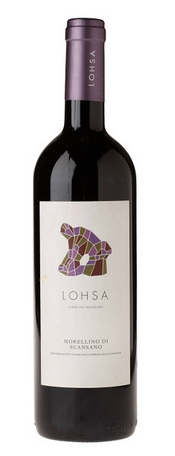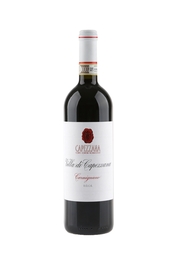Tuscany is a remarkable wine region. Although most of its red wines are based on the Sangiovese grape — with notable exceptions along the coast — the variety among them is almost endless. Even within a single DOCG appellation such as Chianti Classico, the wines, always 80 to 100 percent Sangiovese, vary from commune to commune and from producer to producer.
A case in point is my recent tasting of five Tuscan Sangiovese wines from a single importer, Dalla Terra Winery Direct. This company specializes in family-owned Italian estates and, thanks to its particular distribution model that eliminates the middleman, the wines are all very well priced at retail. More than ranking each wine against the other in terms of quality, I found myself characterizing the wines stylistically to highlight their unique faces.
The Sprightly Summer Sangiovese. This wine —
2019 Lohsa Morellino di Scansano, $16 — was the lightest in body and the palest in color, a medium ruby red. Lohsa is linked to the Carletti family of Poliziano. Scansano is situated a bit

inland from the coast, in a warm area that is cooled by sea breezes at night; Morellino is the local name for Sangiovese. The blend of this wine is 85 percent Sangiovese with Ciliegiolo making up the balance. Sour cherry is the dominant aromatic and shows good flavor concentration despite the modest weight of the wine. This is a delightful, tangy, fresh wine with a bit of Sangiovese tannin reminding you that it’s not frivolous. The Italians might characterize it as spiritoso.
The Pretty Chianti Classico. In a wine culture that seems increasingly focused on the aristocratic Gran Selezione wines of Chianti Classico, the
2019 Badia a Coltibuono Chianti Classico ($22) is a traditionalist because it’s not from a single vineyard, it’s not entirely Sangiovese (Colorino, Canaiolo and Ciliegiolo together are ten percent of the blend), it’s not aged in barriques (large French and Austrian oak casks do that job) and it’s not going for power. In 2019, a mixed vintage, this is a beautifully aromatic wine showing every variation of cherry—tart, ripe red, and dark — along with herbal and earth notes. It has lots of flavor, delicately rendered, within a mid-weight wine of silky texture. The finish begins a bit dry — a vintage effect, no doubt — but fruitiness returns at the end. Of course, a bite of food evens the wine out perfectly. I would drink it sooner than later.
The Polished One.
Poliziano Vino Nobile di Montepulciano ($30) is a crowd pleaser — but probably not to those among my friends who enjoy ultra-traditional Tuscan reds. Its fresh but ripe red cherry fruit is pronounced and focused, its texture drapes richly in the mouth, and its ripe tannins do not dominate the fruit. Sangiovese is complemented by 15 percent of Colorino, Canaiolo and Merlot. So lovely, so flavorful. I suspect that it is new oak that’s polishing the wine so nicely, but in fact the aging regimen involves barriques for only 20 percent of the wine, 500-liter tonneaux for 40 percent, and 3500-liter casks for the remaining 40 percent, all of this oak being used French oak. Not a particularly “international” styling after all, although the taste bends in that direction. Delicious. Might be your favorite wine here.
The Ager. The oldest wine estate among these (dating to 804 AD) from a wine area, Carmignano, recognized by the de Medici dynasty in 1716 and today one of

the smallest DOCG zones in Italy, is Tenuta di Capezzana, today run by a fifth-generation winemaker Benedetta Contini Bonacossi. Carmignano is a tiny area in Tuscany’s northwest. Villa di Capezzana Carmignano is the estate’s flagship wine. A proud distinguishing factor in the Carmignano zone is that since the 16th century Cabernet Sauvignon has been part of the wine’s blend, along with Sangiovese: the
2017 Villa de Capezzana ($30) is 80 percent Sangiovese and 20 percent Cabernet. It’s fun to tease out which characteristics the Cabernet contributes: the weight of the wine, the statuesque structure, the herbal notes that mix with Sangiovese’s cherry? But in fact, the wine is of a piece, showing concentration, substance, harmony and complexity that are settling in for the long haul. This classic wine won’t put you off if you drink it now, but you can bet on it to age.
The Consistently Reliable Choice. I have reviewed wines from Selvapiana here several times over the years because they are consistently, reliably solid and top-quality wines that represent great value. The
2018 Selvapiana Vigneto Bucerchiale Chianti Rúfina Riserva ($36) is a single-vineyard wine from the estate’s best site and it is entirely Sangiovese. The Rúfina zone is one of the finest of the Chianti DOCG area, situated northeast of Florence in a hilly area that’s cooled by elevation and winds from the Apennines assuring high acidity and fruit freshness. This 2018 is so concentrated in understated flavor that you might want to suck it like a popsicle to extract its dark cherry and tart red cherry juiciness. Or swish the wine around your mouth to feel its silky-velvety texture, lit from within by high acidity. This wine is the fullest-bodied wine among these five, but in no way powerful or pretentious.
Sassy, pretty, polished, age-worthy or solid and complete: Even this mini selection of Tuscan reds proves what pleasures await an exploration of Sangiovese in Tuscany.